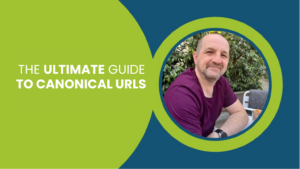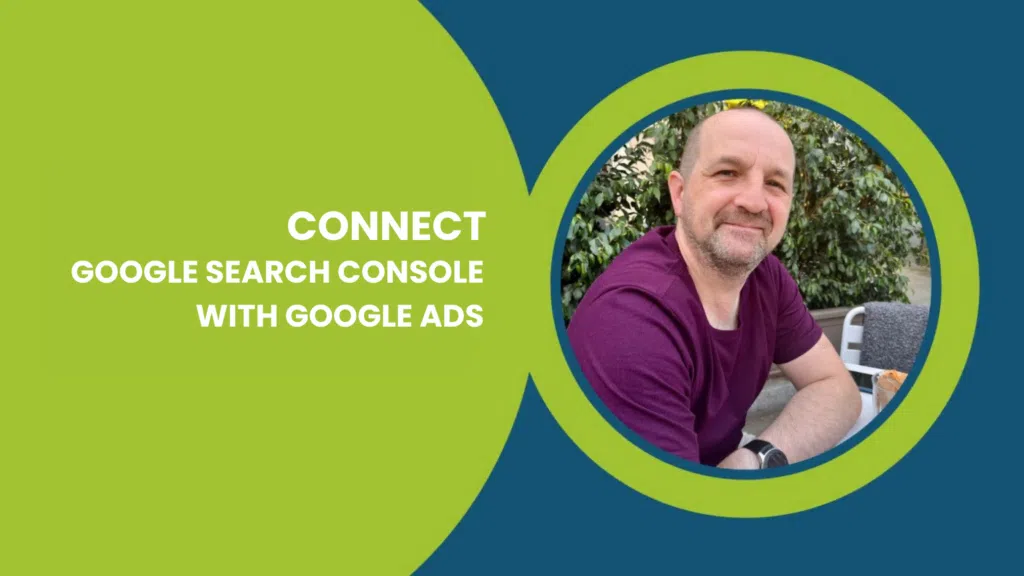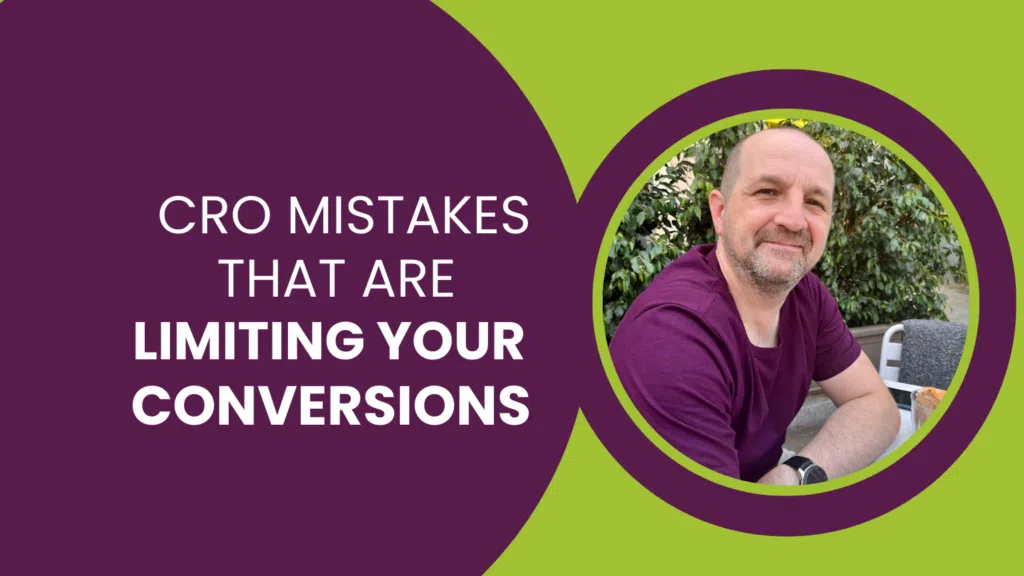If you’re new to the world of search engine optimisation (SEO) you might have heard of meta tags. They are a key part of on-page SEO, but a lot of people underestimate the importance of meta titles and descriptions. Understanding what they are, what role they play and how to optimise them is vital for your website.
What are meta titles and descriptions?
Meta titles and descriptions, also called meta tags, are snippets of the HTML code that are displayed on the search results. They give a brief overview of what the web page is about, telling users and search engine crawlers more about the content on-page.
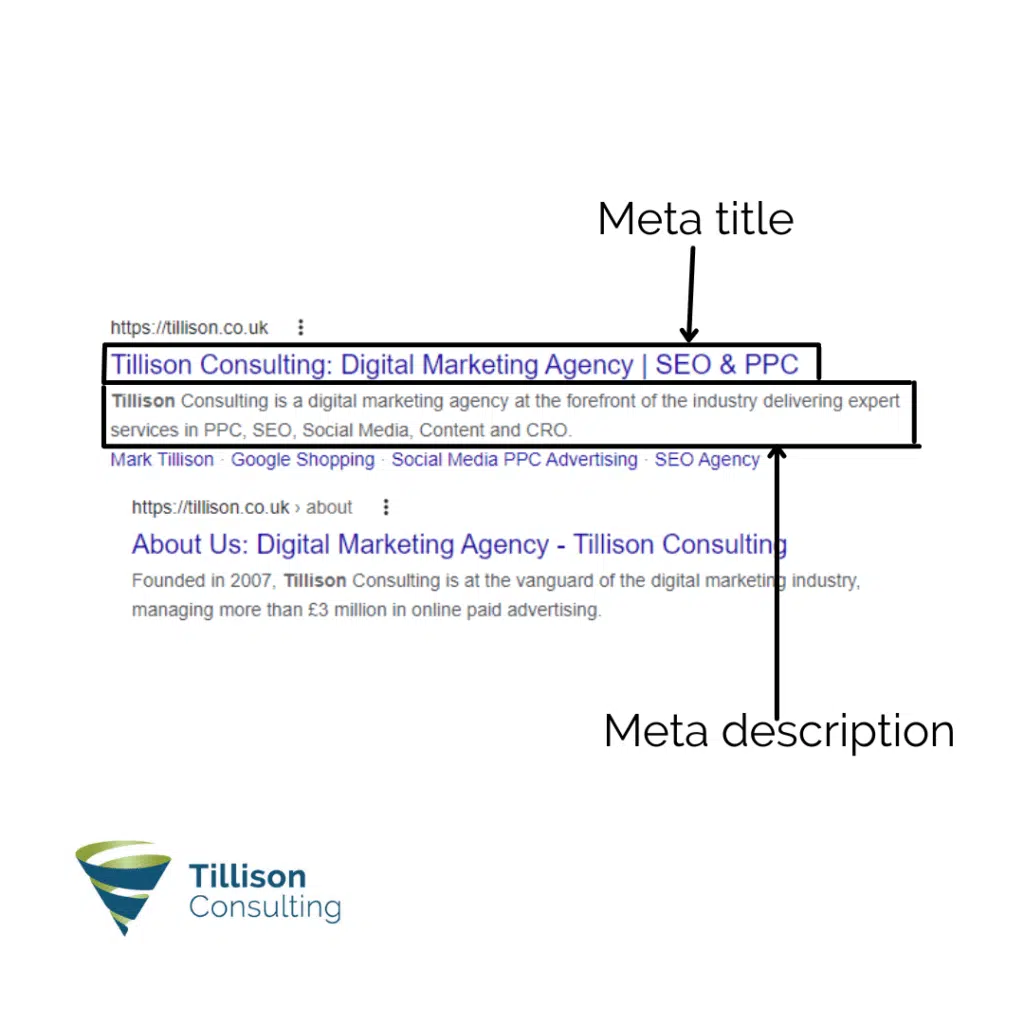
The meta title is also called the title tag or page title. It shows up in the search engine results and at the top of the browser.
Why are meta titles and descriptions important?
The importance of meta tags comes more from increasing the click-through rate to the web pages than for ranking, as Google has announced that they are not ranking factors. However, search engines do still draw information from them.
Meta titles and descriptions are also important because when a user searches for a query, the keywords in the meta titles and descriptions are displayed in bold. This shows them at a glance how relevant that site is for those keywords, helping sites with the right keywords in the right places stand out.
Another reason meta titles and descriptions are important is because they are a way of encouraging organic visitors to click through to your site. Writing them well and using them to encourage users to click through to your pages is a great way of bringing more traffic to your site.
When pages are shared on social media, the meta titles and meta descriptions are displayed to explain what the page is about so users can decide whether it is relevant to them. Strong meta tags will encourage more clicks from users when pages are shared on social media, showing their importance beyond the search engine results.
Do meta descriptions affect SEO?
Yes, meta descriptions can have an impact on SEO. While they are not a direct ranking factor, they play an important role in influencing click-through rates from search engine results pages (SERPs).
Here’s how meta descriptions can affect SEO:
Increased Click-Through Rate (CTR): A well-crafted and compelling meta description can encourage users to click on your link in the search results. Higher click-through rates signal to search engines that your page is relevant and valuable to users, and this can indirectly impact your rankings.
Better User Engagement: If users click on your link and find the content on your page relevant and engaging, it can contribute to positive user signals, such as longer time spent on the page and lower bounce rates. These factors can be considered by search engines when evaluating the quality of your content.
Relevance to Search Queries: Including relevant keywords in your meta description can help signal to search engines that your page is relevant to specific search queries. While keyword stuffing is not recommended, incorporating natural language that aligns with user intent can be beneficial.
Social Media Sharing: Meta descriptions are often used as the default description when a page is shared on social media platforms. A compelling meta description can increase the likelihood of users clicking on shared links, leading to increased traffic and potential backlinks.
Do meta titles affect SEO?
The meta title plays a crucial role in influencing SEO outcomes. Its significance and impact are on par with that of the meta description.”
Here are a few reasons why the meta title is significant for SEO:
Search Engine Ranking: Search engines use the meta title as a key factor in determining the relevance of a page to a user’s search query. Including relevant keywords in the meta title can help improve the page’s chances of ranking higher in search results.
User Click-Through Rate (CTR): The meta title is often the first thing users see in search results. A well-crafted and compelling meta title can attract more clicks from users, increasing the page’s CTR. A higher CTR is a positive signal to search engines and can contribute to improved rankings.
User Experience: A clear and concise meta title provides users with a quick understanding of what the page is about. This improves the overall user experience and helps users decide whether to click on the link. Positive user signals, such as low bounce rates and longer time spent on the page, can indirectly benefit SEO.
How to Optimise Your Meta Title
Search engines display a limited number of pixels from each meta tag; for meta titles, this is 600 – so between 55 and 70 characters. This means it’s better to err on the side of caution and write meta titles that are around 55 characters to ensure the entirety of the text is visible on both mobile and desktop. They should also contain your keywords naturally and tell your readers what your web page is about.
Each page of your site should have a unique meta title. Search engines view pages with the same meta titles as duplicate content, which can affect your placement in the search results. It can also mean that the search engine rewrites your meta title, which can mean your hard work was for nothing. It’s better to write unique meta titles for each page to have your best chance of ranking highly.
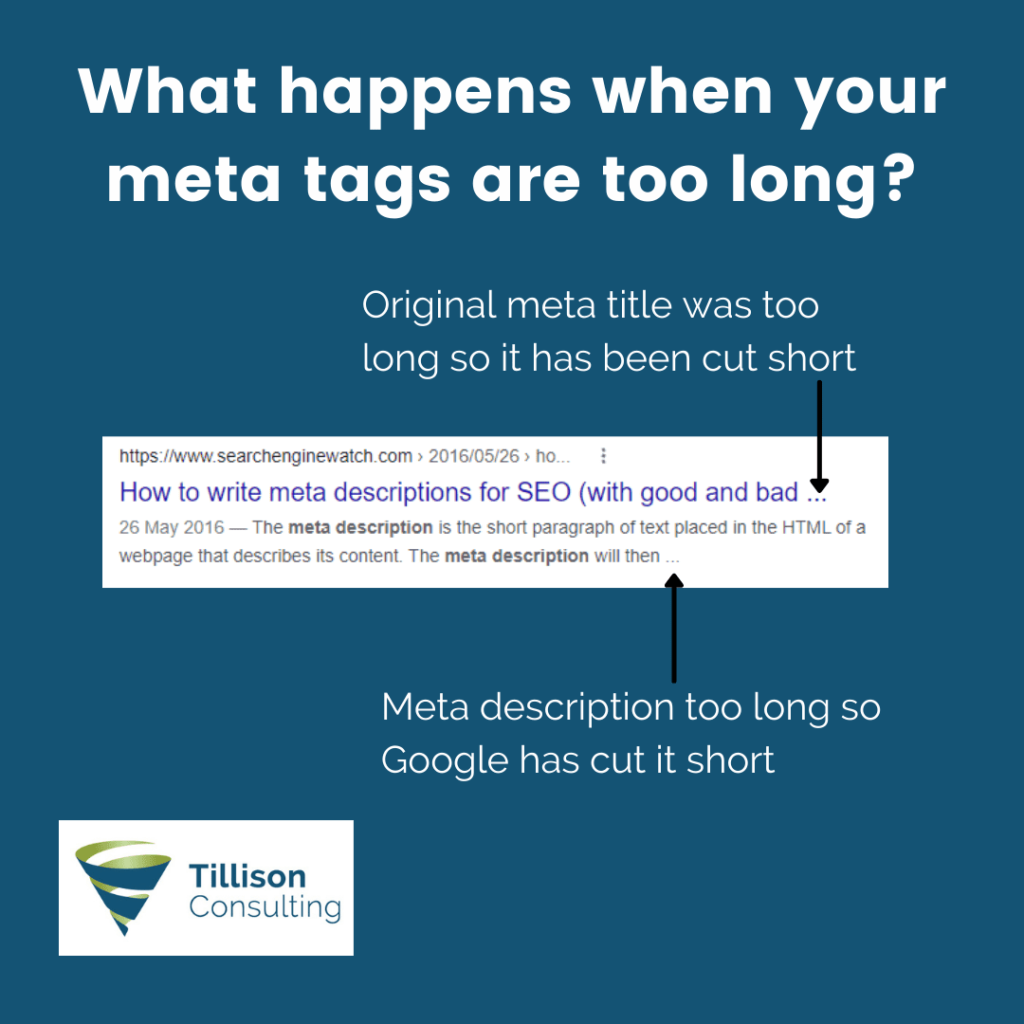

Are your competitors consistently outranking you?
We can help you understand why and, more importantly, how to change it!
Get an SEO Review Now (Personal Video)
How long should a meta description be?
Your meta description should be around 155 characters to display properly on the search engine results page.
How to optimise a meta description
It should give a brief overview of the contents of your web page and contain your keywords naturally, without overusing them, as this will be seen as spam by the search engines. It should also be enticing to the reader – you want to convince them to visit your page.
The best meta descriptions are ones that tell users about the content of the web page without telling them everything, and by giving them a call to action (CTA) to visit. This will make them more likely to click on the link and visit the page.
Recent SEO Blog Posts
This CTA might be something like ‘buy now’ for a product page, ‘read our blog’ for a blog or even ‘find out more’ for an information page. These tell the user what they should do once they’ve read the meta description, and if the rest of the description sparks their interest, reminds them there is more to the page.
Each page on your website should have a unique meta description, which is relevant to the page it’s describing. It should also contain keywords that are relevant and well-researched. Meta descriptions are supposed to represent the page. This means that while a product page’s meta-description should explain how the product makes the user’s life easier, a homepage’s meta description has to represent the whole business.
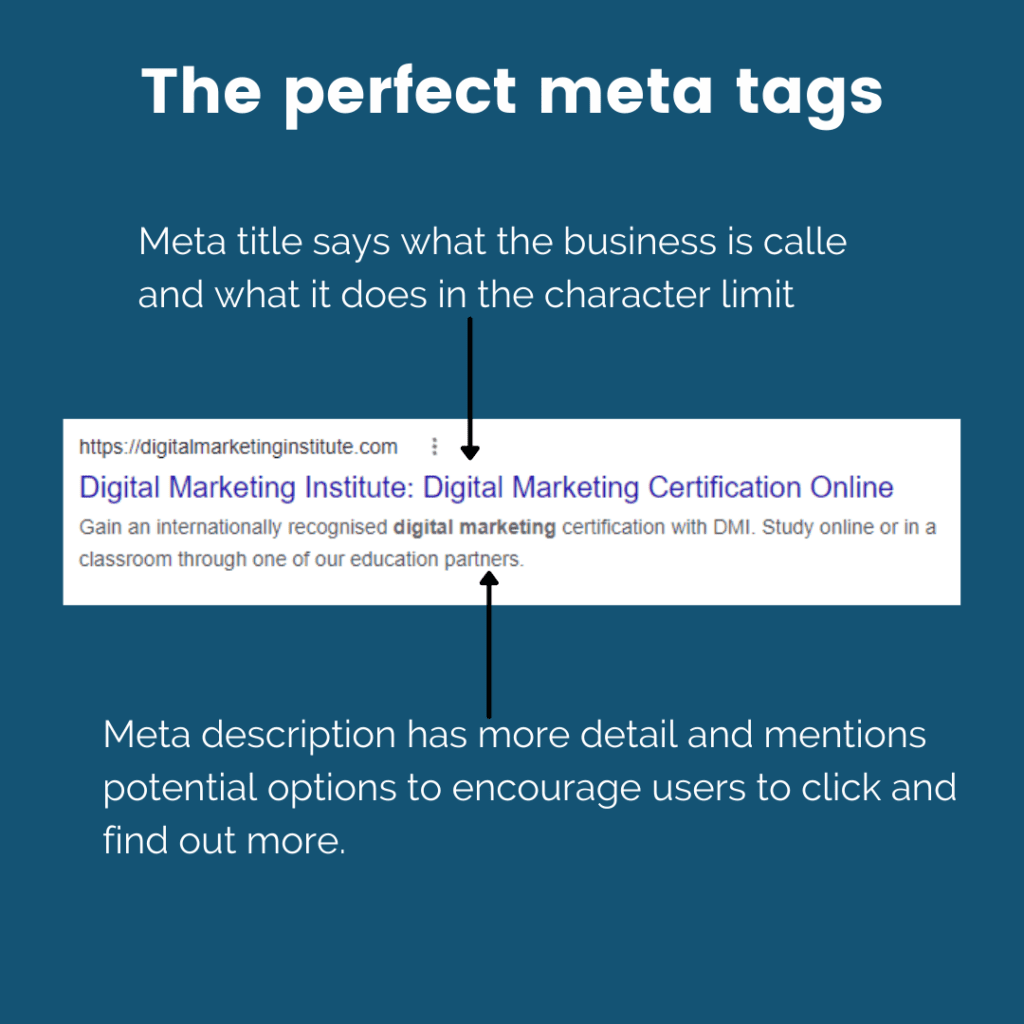
Do search engines always use the meta tags provided?
No, they don’t. Search engines can override the meta title and description you provide if they aren’t relevant to the user’s query or if the meta description doesn’t explain the content of the page. In this case, it will use the content of the page to help determine what the new meta title and description should be.
What this means is that if for a particular query, a section of your page answers the user’s query better than your meta description does, then Google will select that to show on the search results. This means that if there is a specific search query you want your meta title and description to be shown for, you need to optimise the page title and meta description for that query, as well as making it relevant to the content of the page.
Google will also write its own meta description or meta title if there isn’t one provided or if the provided title or description doesn’t explain the content of the page, is a duplicate of other title tags or meta descriptions on the same site, or is obsolete or out of date.
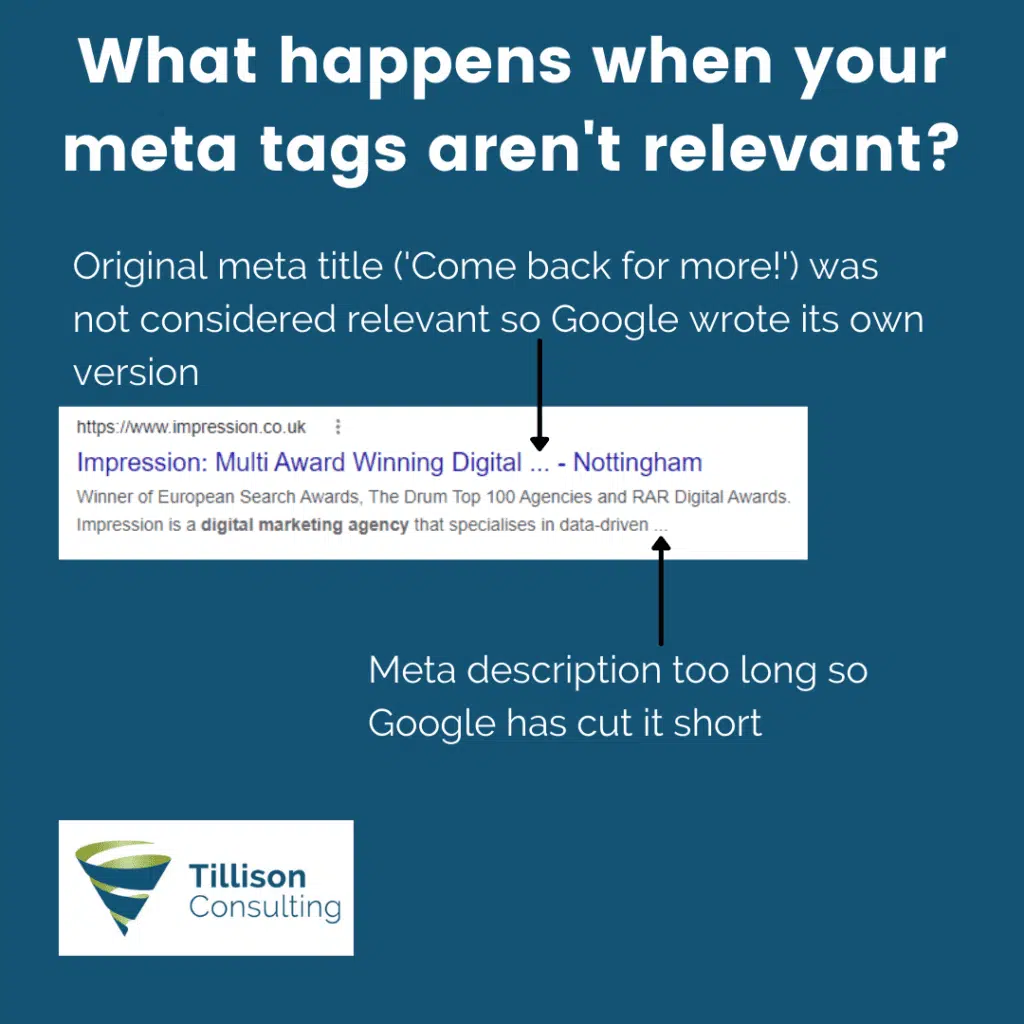
However, just because there is a chance that Google will rewrite your meta title or description doesn’t mean you should stop writing them. In fact, Google uses the meta tags provided to it 87% of the time, so there’s no reason you should be ignoring your meta titles and descriptions.
Google’s Guidelines on Title Tag Width Changes
For those of you who haven’t already heard, Google has been testing a significant change to the width of the left-hand column containers from 512 pixels to 600 (a 17% increase). Along with this change, Google has increased the available length of result titles.
So how many characters can we use in our title tags now?
The real answer is it varies. As you may or may not know, Google uses the Arial font for its title, and Arial is proportional. What this means is that characters will vary in the amount of space they use. So what is the magic number? My recommendation would be to try and keep your titles under 60 characters just to be on the safe side, but the upper limit on characters is now as much as 73 characters long.
What were the limits before the change?
For the last couple of years, the recommendations have been to try and keep the title tags under 55 characters, with the upper limit being around 60 characters.
Are these changes permanent?
Google has yet to confirm whether these changes are just tests or whether they are permanent changes. So you might want to hold back before making any drastic changes to your title tags until we know if these changes are here to stay.
We will do our very best to keep you informed in regards to any further changes that Google makes to the length of meta titles and meta descriptions in regards to this update in the near future, so make sure to stay alert for any updates. If your website has been affected by this update, let us know in the comments below.
Summary
From this, you can see that underestimating the importance of meta titles and descriptions can cause you problems with your click-through rate if they’re not properly optimised. It’s important to remember that they’re not a ranking factor. However, optimising them is only one part of a larger SEO ranking strategy, which would also cover link building, content, site speed and more.
Ensuring they are the correct number of characters so they display properly, that they tell users about the content of the page while also enticing them to visit. Remember that although search engines might rewrite your meta titles and descriptions, it’s important to put them in and have them be unique for each page of your website.
If you’re having difficulty with your meta tags, remember we’re SEO experts, so get in touch with us today!


